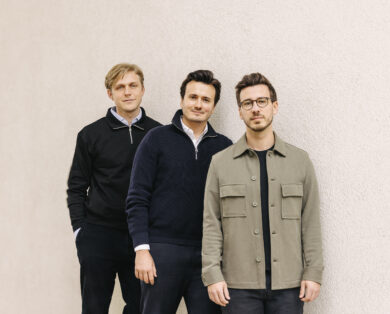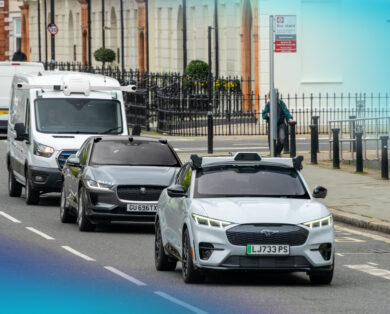- Portfolio News
- 15 July, 2024

Last December we publicly announced our Sustainable Future Goals (SFGs) – our internal framework to formalise ESG and address the critical challenges the earth faces today.
When we decided in 2020 that it was time to do better, we embarked on a learning journey. We first had to understand our role in addressing these challenges, then to develop our own approach and now we are focusing on making change happen across the 10 SFGs.With Earth Day taking place this week we wanted to continue the conversation around climate change, and take a moment to share some of the steps we have taken with regards to our internal operations since the announcement in December.
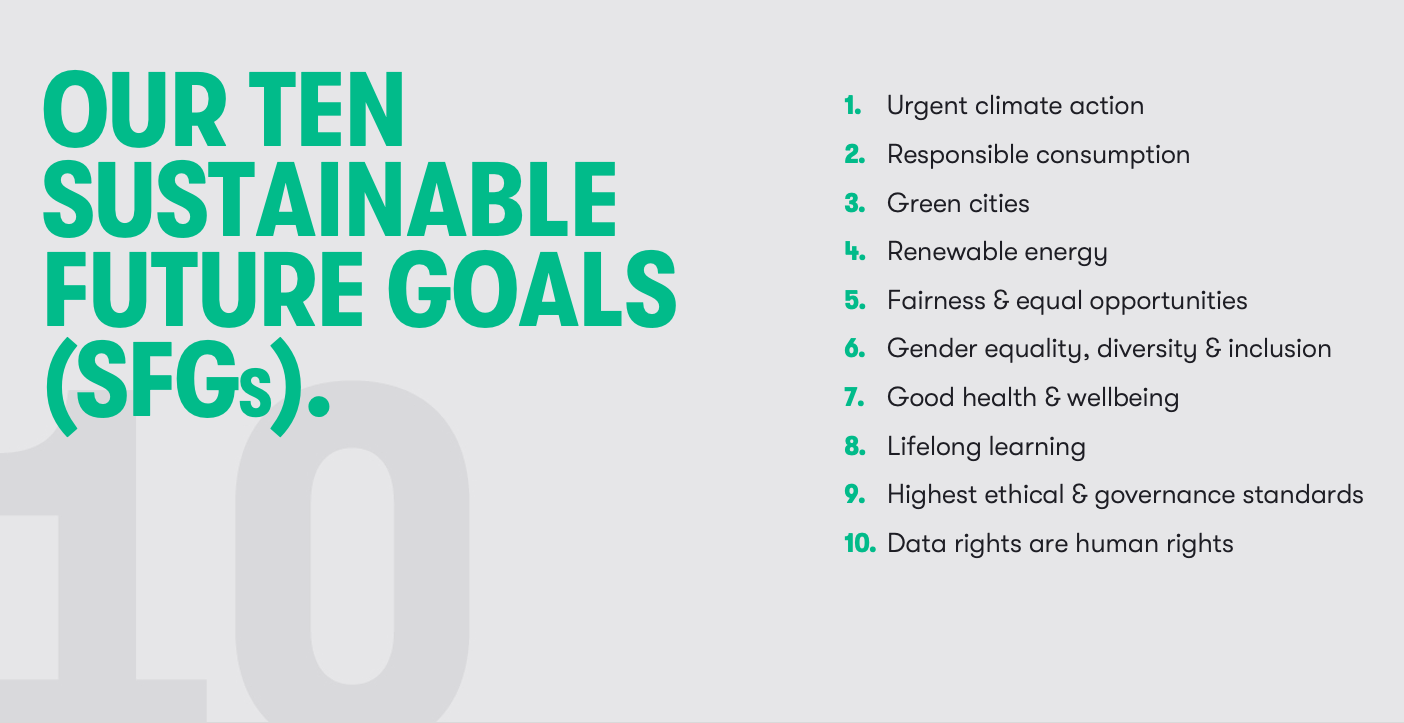
Our Ten Sustainable Future Goals (SFGs)
In 2019, we estimated that we emitted 147.5 tonnes of CO2. It was a back of the envelope calculation, taking into account only travelling, food and energy. At the time, we decided to offset our impact by planting trees in a forest in France with Tree-Nation.This year, we knew we needed to do better and so over the past few months, we reviewed how we are measuring, reducing and offsetting our carbon emissions. We became a member of Leaders for Climate Action (LCFA) and they have helped us measure our emissions and understand levers for reducing emissions. Check this out if you want to get a taste of what they do.
MEASUREMENT
We calculated that we emitted 121.6 tonnes of CO2 in 2020. This time we added granularity to our measurements, for instance, we included details on the class used for travel. Although it includes more emission factors than last year, our emissions are slightly lower than in 2019. This is obviously due to Covid-19 significantly limiting travelling. We plan to add increasing granularity over the years, not because we think it will change the calculated emissions significantly, but because it’s key to fully understand the levers to reduce emissions.
REDUCTION
As part of our SFGS, we have made commitments to reducing overall air travel, promoting video conferencing and attending more board meetings virtually. Alongside this, we found our main source of carbon emissions in 2020 was energy consumption, representing 63% of our emissions. This year, we’ve decided to switch to a green energy provider.Another area of improvement has been our office recycling system. We reviewed our recycling options and put more effort into educating the team.
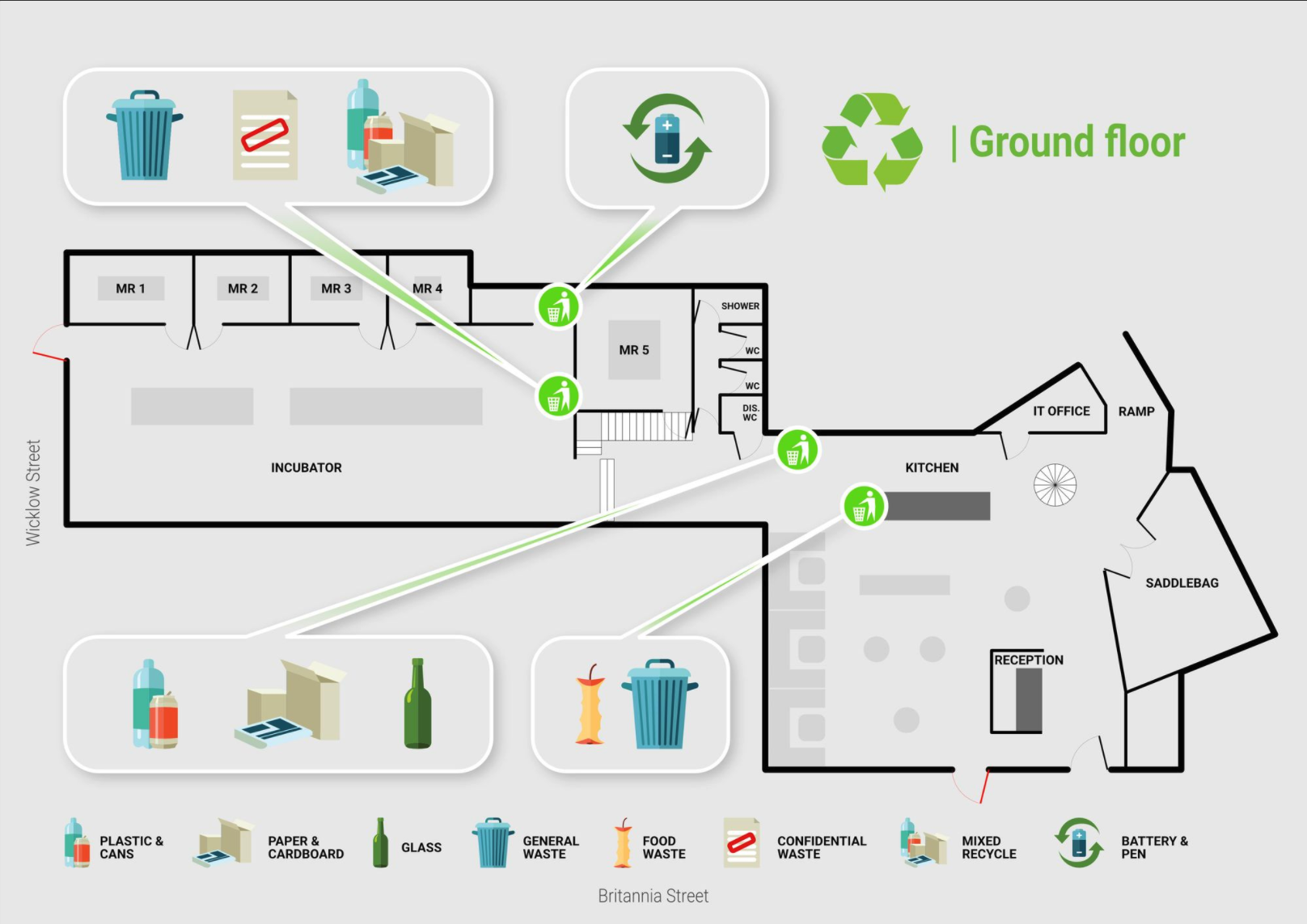
Recycling points in Balderton’s office
OFFSETS
There are multiple options to offset emissions, each has its upsides and downsides.
- There is direct short-term capture with nature-based solutions like forestry (Earthly) or agriculture/soil (Rize.ag, Stock CO2).
Challenges: durability of tree planting, often ex-ante credits for regenerative agriculture so challenge in transparency and monitoring.
- Then, there is direct long-term capture with carbon removal projects (Puro.earth, Carbo Culture, Climeworks).
Challenges: the price is on average more than double the price of other offsets, and although the price will go down over time, today it’s a limitation in terms of incentive.
- Finally, there are indirect alternatives which are the solutions that help us transition to greener operating models like clean energy projects (Inuk, Trine).
Challenges: indirect impact because adoption of the green alternative is out of your control.We summarized a few of the challenges above but the topic is complex. You can learn more, here from Bill Gates’ green manifesto, here in Wired, here from Microsoft, and here from Inuk (in french).
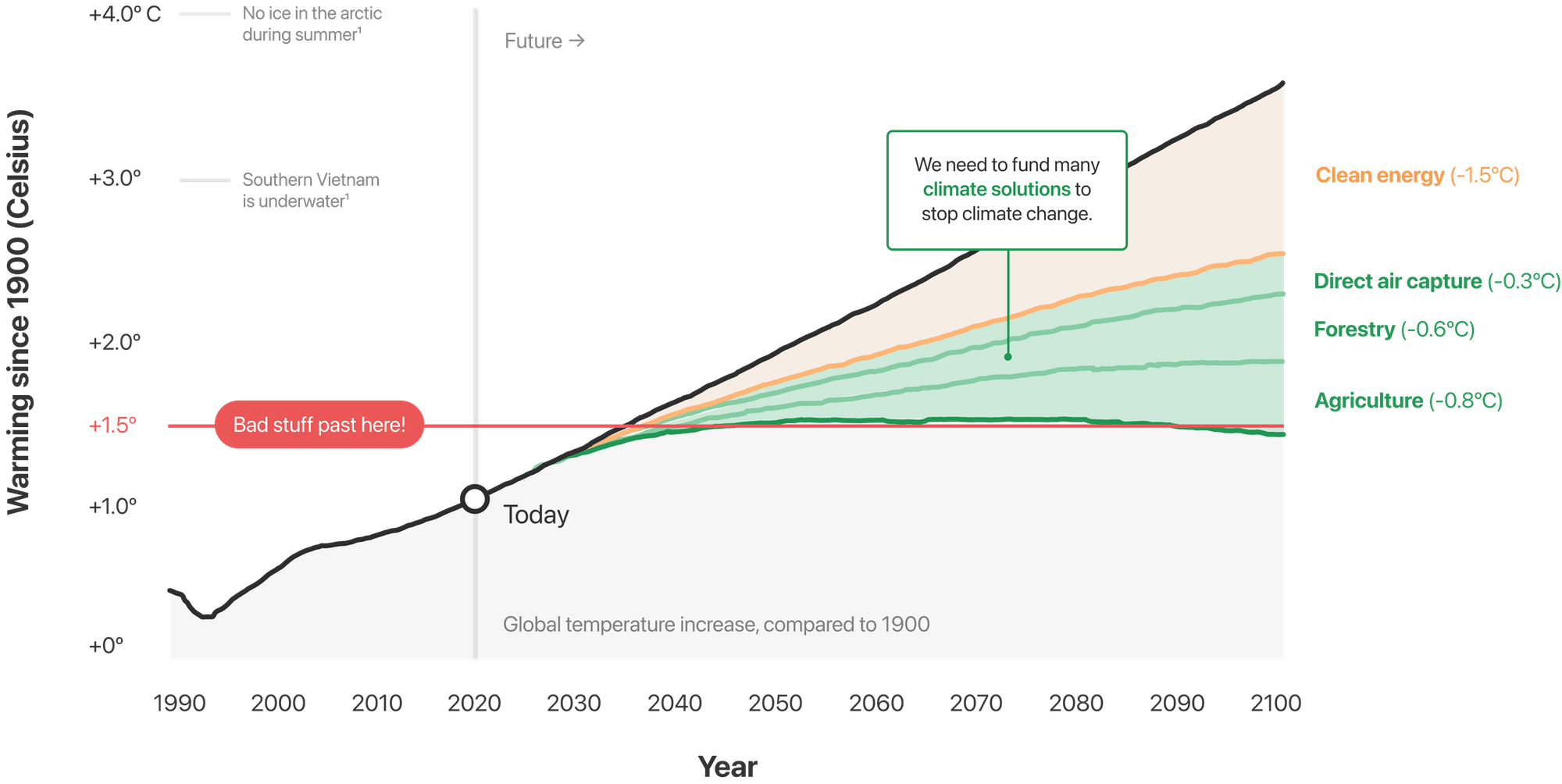 Historical carbon emissions and predictions. Image source: https://www.wren.co/
Historical carbon emissions and predictions. Image source: https://www.wren.co/
OUR APPROACH
After spending some time thinking about the best approach, we came to a few conclusions:
- We want to offset more than what we emit and fund different approaches. This is because each approach has its upsides and downsides.
- We want to offset our employees’ personal carbon footprint on top of company emissions.
- We prefer European-based offset projects.
- We prefer players that focus on offsets only, who take a full-stack approach and are creating a new standard beyond third party certification using technology to enhance transparency.
To summarise, we’ve been busy scrutinising our internal operations to identify where we need to improve and we’ve already started taking actions. Besides internal operations, we’re not forgetting the two other pillars of our SFG approach: portfolio companies and investment decision making. Both are top of mind and we look forward to sharing more on what we are doing there over the next few months.We are on a journey to fulfil our responsibility to proactively contribute to addressing Earth’s climate challenges. We know there is a long way to go and there will be a lot of learning needed along the way.We would love to hear from you if you have feedback or thoughts that could help us.











